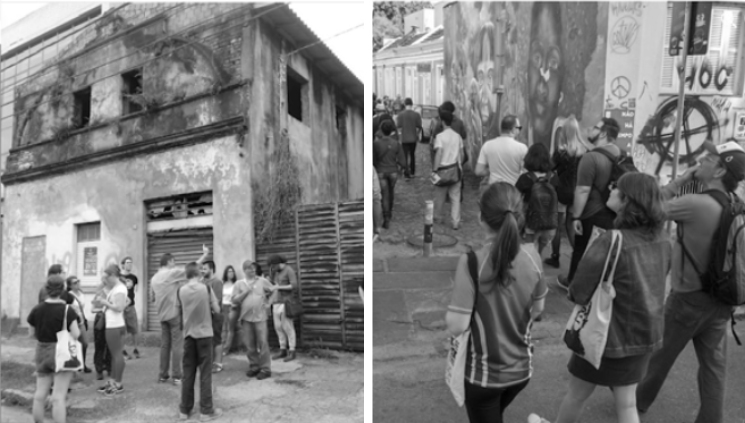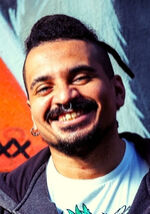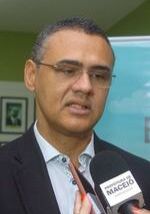Experiments in historical learning – Micaela Franciele Costa’s (UFS) review of “Ensino de história, tecnologias e metodologias ativas: novas experiências e saberes escolares”, organized by Priscilla Leite, Cláudia Borges and Arnaldo Szlachta Júnior
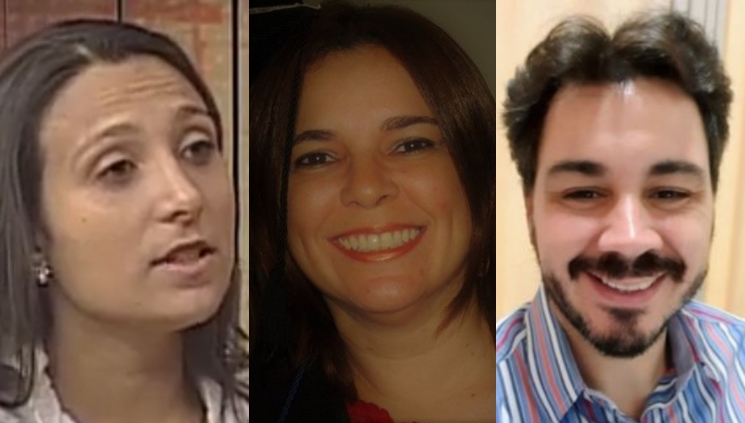
Abstract: Ensino de história, tecnologias e metodologias ativas: novas experiências e saberes escolares, organized by Priscilla Leite, Cláudia Borges and Arnaldo Szlachta Júnior in 2022, explores the use of technologies in history teaching. It is aimed at educators, discussing the integration of electronic devices in history education. Critically, the book lacks a deeper contextualization and practical examples of how to implement its approaches in the school context.
Keywords: History Teaching, Active Methodologies, School Knowledge.
The book “Ensino de história, tecnologias e metodologias ativas: novas experiências e saberes escolares”, published in 2022 by CCTA, was organized by Priscilla Leite, Cláudia Borges and Arnaldo Szlachta Júnior. In view of the growing presence of electronic devices in everyday life, the book aims to discuss the use of technologies and active methodologies in History teaching.
The work in question is part of the series “Experiments and reflections on practices in History teaching”, organized by ProfHistória (Professional Master’s in History Teaching) at UFPB (Federal University of Paraíba). The organizers are teachers and researchers from the ProfHistória faculty, focusing their research on history teaching and teacher training.
Aimed at bringing together reflections and guidelines for educators on the use of technology and active methodologies in History teaching, considering the ubiquity of electronic devices, the book is timely. History teachers should consider both how to apply and the reasons for integrating the technological tools available in contemporary society into teaching.
To this end, the book has been structured into eleven chapters, written by various researchers dedicated to reflecting on the use of technology and active methodologies in history teaching. The aim was both to highlight the usefulness of electronic devices in the classroom and to demarcate how teachers can help students use technology in a conscious and reflective way. The collection is made up of the works listed below.
The first chapter, “Between Dusty Papers and Digital Media or How Historical Learning Comprises Multiple Dimensions”, underlines the importance of preserving physical documents and traditional collections. At the same time, the authors point out the ethical and methodological challenges linked to the use of digital media. The chapter stands out for its careful approach, highlighting the necessary applicability of technological and pedagogical innovations and emphasizing the value of knowledge acquired over generations.
In “Education 4.0 and History Education: Digital Media, History Teaching and Active Methodologies for the 21st Century”, the importance of Digital Information and Communication Technologies (DICT) for history teaching is highlighted. The authors highlight the need to use these technologies in a meaningful way, promoting the decentralization of knowledge production and encouraging a pedagogy mediated by new technologies. They also emphasize the role of students, precisely stressing the importance of a historical-critical approach and the consideration of diversity and discursive plurality in education.
The need to rethink teaching practices, highlighting the potential of active methodologies and hybrid teaching for participatory and dynamic learning, is the theme of “Monarchical Absolutism in Podcasts: Report of an Inverted Classroom in the Supervised Internship in History in Western Bahia (2019)”. This work discusses active methodologies that enable students to build their own knowledge through debates, projects and digital resources.
The chapter “Challenges of Teaching History in Emergency Remote Classrooms: Inverting Classrooms as a Possibility for Active Learning” deals with the importance of teachers adapting to the use of technology. During this discussion, the authors mention active methodologies as strategies to promote meaningful learning. Although real experiences are described, the descriptions are brief, but serve to illustrate the use of educational technologies to make lessons interactive and interesting.
In the fifth chapter, “Teaching History, Comics and Fake News: an experience with the Cômica app”, the scholars highlight the relevance of comics as an accessible and motivating language for students when teaching History. They also emphasize the possibilities of active methodologies, digital technologies and the use of smartphones in teaching History during remote classes.
“What do history teachers produce when they are on YouTube?” addresses the importance of YouTube as an educational tool. In this chapter, the authors analyze the role of history teachers who produce content on this platform. They conclude that the platform in question has significant educational potential, allowing students to search for videos for instruction.
“History Teaching and Invisible and Silenced Heritage: A Guide to Producing Interactive Digital Maps” debates the challenges facing history teaching and proposes innovative solutions using digital resources. The main focus is on the importance of an inclusive historical learning experience that takes advantage of technological resources to promote learning that is connected to the 21st century.
This is followed by “Caminhos Operários Virtuais: Relato de uma Experiência com Trajetos de Memória Realizados à Distância”, which describes the transformation of the “Caminhos Operários” project in Porto Alegre. In this program, the route is transferred from the physical environment to a remote educational practice during the pandemic. The text reports on this transformation, exploring the limits and possibilities of this teaching experience. According to the authors, the project aims to recover the memory of the organized working class.
Caminhos Operários held in 2019 (from left to right): former FORGS headquarters on Rua do Parque and Travessa dos Venezianos Image: Collection of Frederico Duarte Bartz (Available at: LEITE; BORGES; SZLACHTA JR, 2022, p.181)
The integration of Heritage Education, History Teaching and games as a teaching strategy is discussed in “Cultural Heritage in the City of Paulista-PE: A Heritage Education Experience based on a Digital Trail Game”. With the aim of promoting historical knowledge and a sense of cultural belonging, a participatory inventory of the cultural assets valued by the students was developed and a game was created as a teaching-learning resource. The expected result of the research is to help identify the cultural assets valued by the students and thus foster a sense of belonging.
The research “Digital Information and Communication Technologies, History Teaching and Heritage Education: Teacher Training Experiences in the Early Years of Basic Education” addresses the use of digital technologies in History teaching and Heritage Education. The authors explore the relationship between memory, history and heritage, discussing different theoretical perspectives on memory. The students had a participatory learning experience, and the importance of continuous teacher training in the use of digital technologies for teaching History and Heritage Education was highlighted.
Finally, “Narratives of Campinas’ Past in ‘Retalhos Históricos de Campina Grande/PB’ (2009-2020)” highlights the digital project that preserves and shares the history of the city of Campina Grande. It describes the creation of the project and its development, highlighting its collaborative nature and the importance of digital history. The project uses various online platforms to reach a wide audience.
The text is organized with a clear and coherent structure, chronicling the progression of the authors’ experiences. The collection presents enriching discussions and practical proposals, revealing the diversity of experiences and promising paths. However, reading it shows that the work lacks a more in-depth contextualization of the relevance and gaps in History teaching in line with the social transformations mediated by digital media.
This broader contextualization could have been achieved by presenting statistics, previous studies or practical examples that demonstrate the need for innovative approaches in this educational field. Although the texts discuss the challenges of teacher training in times of digital media, they could be improved if they presented a more critical analysis of the challenges faced and a more in-depth discussion of the use of active methodologies and digital technologies. The work lacks more concrete examples of how the proposed approaches can be implemented in different school contexts and the possible challenges that may arise. Above all, the way in which integration between history degrees and technology can be achieved deserves more attention and would make a greater contribution to this subject.
In conclusion, the texts highlight the importance of digital technologies, games and digital history projects in history teaching. They emphasize the need to adapt educational practices to the digital context, taking advantage of the potential of online platforms to promote historical learning and engage students. However, they also point out challenges, such as unequal access to technologies and the need for ongoing teacher training. Overall, despite the lack of more in-depth contextualization and the absence of concrete examples in the application of the integration between History teaching and technology, the book fulfills its main objective, considering that this research offers valuable insights for educators interested in exploring the use of digital technologies in History teaching and Heritage Education to train citizens who are more critical of their rights and duties in a connected world.
Summary of “Ensino de História, tecnologias e metodologias ativas: novas experiências e saberes escolares”:
- Apresentação
- Entre papéis empoeirados e mídias digitais ou de como o aprendizado histórico comporta múltiplas dimensões | Ângelo Emílio da Silva Pessoa
- Educação 4.0 e educação histórica: mídias digitais, ensino de história e metodologias ativas para o século XXI | Alexandre de Souza Júnior
- O absolutismo monárquico em podcasts: relato de sala de aula invertida no estágio supervisionado em história no oeste baiano (2019) | Aline Vanessa Locastre e Duglas Novais da Silva
- Desafios de ensinar história nas aulas remotas emergenciais: invertendo as aulas como possibilidade de aprendizagem ativa | TAdeu Moura de Almeida e Paulo Tarcísio Moura de Almeida
- Ensino de história, histórias em quadrinhos e fake news: uma experiência com o aplicativo cômica | Keliene Christina da Silva
- O que produzem os professores de história quando estão no Youtube? | Pedro Botelho Rocha e Juliana Alves de Andrade
- Ensino de história e patrimônios invisíveis e silenciados: um guia para a produção de mapas digitais interativos | Renana Marques Birro
- Caminhos operários virtuais: relato de uma experiência com trajetos de memória realizados à distância | Frederico Duarte Bartz
- Patrimônio cultural na cidade de Paulista – PE: uma experiência de educação patrimonial a partir de jogo de trilha digital | Williams Urbano da Silva
- Tecnologias digitais de informação e comunicação, ensino de história e educação patrimonial: experiências de formação docente nos anos iniciais da educação básica | Aléxia Pádua Franco, Nilza Aparecida da Silva Oliveira e Núbia da Silva Lopes Freitas
- Narrativas do passado campinense no ‘retalhos históricos de campina grande/PB’ (2009–2020) | Thiago Acácio Raposo e Vivian Galdino de Andrade
- Sobre as organizadoras e os organizadores
- Sobre as autoras e os autores
Reviewer
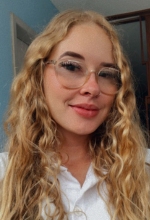 Micaela Franciele Costa has a degree in Pedagogy (UFS) and is an elementary school teacher. LATTES ID: http://lattes.cnpq.br/9009913060507621; ORCID ID: https://orcid.org/0009-0003-4455-7302; E-mail: costa.micks@gmail.com.
Micaela Franciele Costa has a degree in Pedagogy (UFS) and is an elementary school teacher. LATTES ID: http://lattes.cnpq.br/9009913060507621; ORCID ID: https://orcid.org/0009-0003-4455-7302; E-mail: costa.micks@gmail.com.
To cite this review
LEITE, Priscila Gontijo; BORGES, Cláudia Cristina do Lago; SZLACHTA JÚNIOR, Arnaldo Martin (org.). Ensino de história, tecnologias e metodologias ativas: novas experiências e saberes escolares. João Pessoa: Editora do CCTA, 2022. [electronic resource]. Review by: COSTA, Micaela Franciele. Technological experiments in historical learning. Crítica Historiográfica. Natal, v.3, n.13, Sep/Oct, 2023. Available at <Experiments in historical learning – Micaela Franciele Costa’s (UFS) review of “Ensino de história, tecnologias e metodologias ativas: novas experiências e saberes escolares”, organized by Priscilla Leite, Cláudia Borges and Arnaldo Szlachta Júnior – Crítica Historiografica (criticahistoriografica.com.br)>.
© – Authors who publish in Crítica Historiográfica agree to the distribution, remixing, adaptation and creation of their texts, even for commercial purposes, provided that they are given due credit for the original creations. (CC BY-SA).

